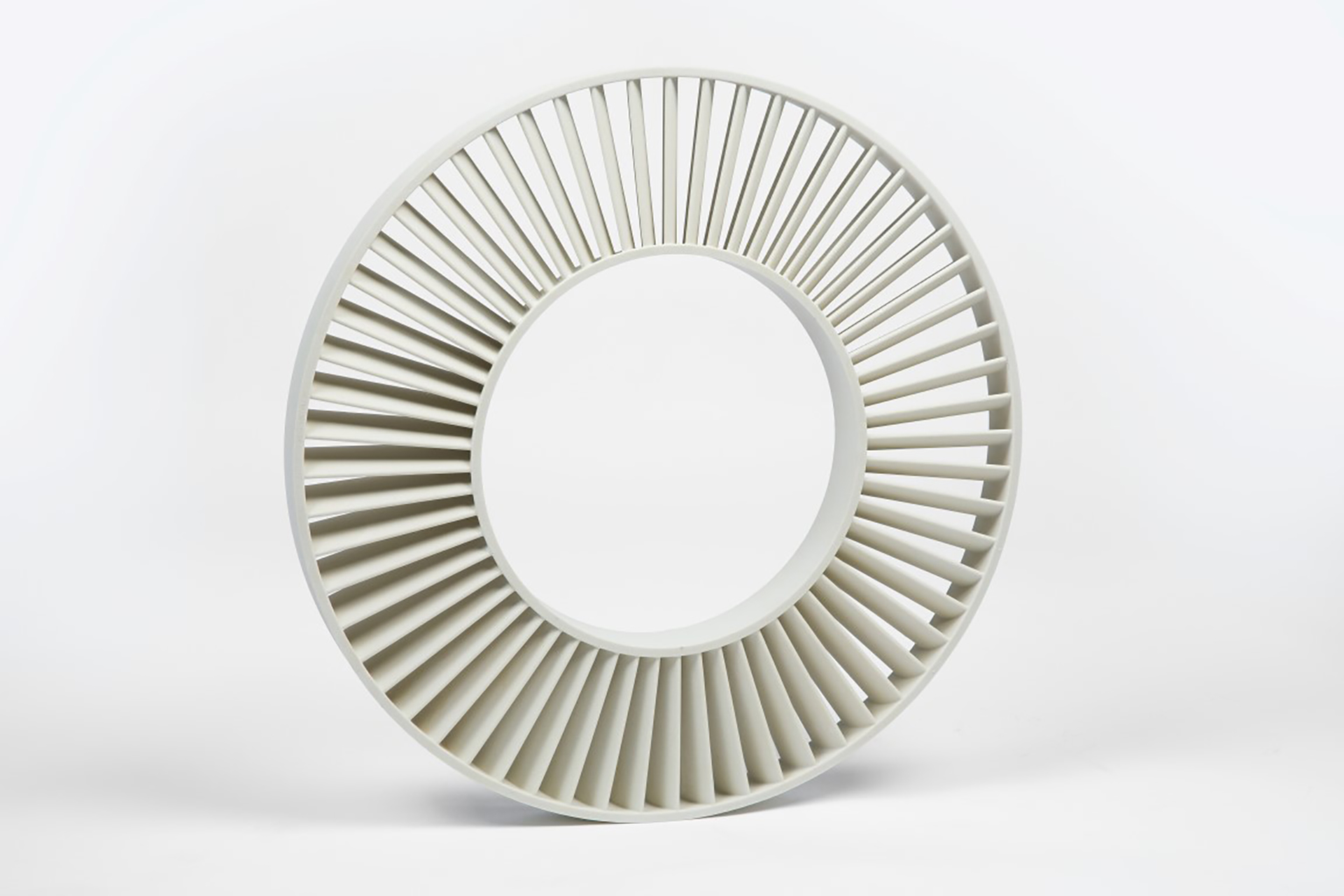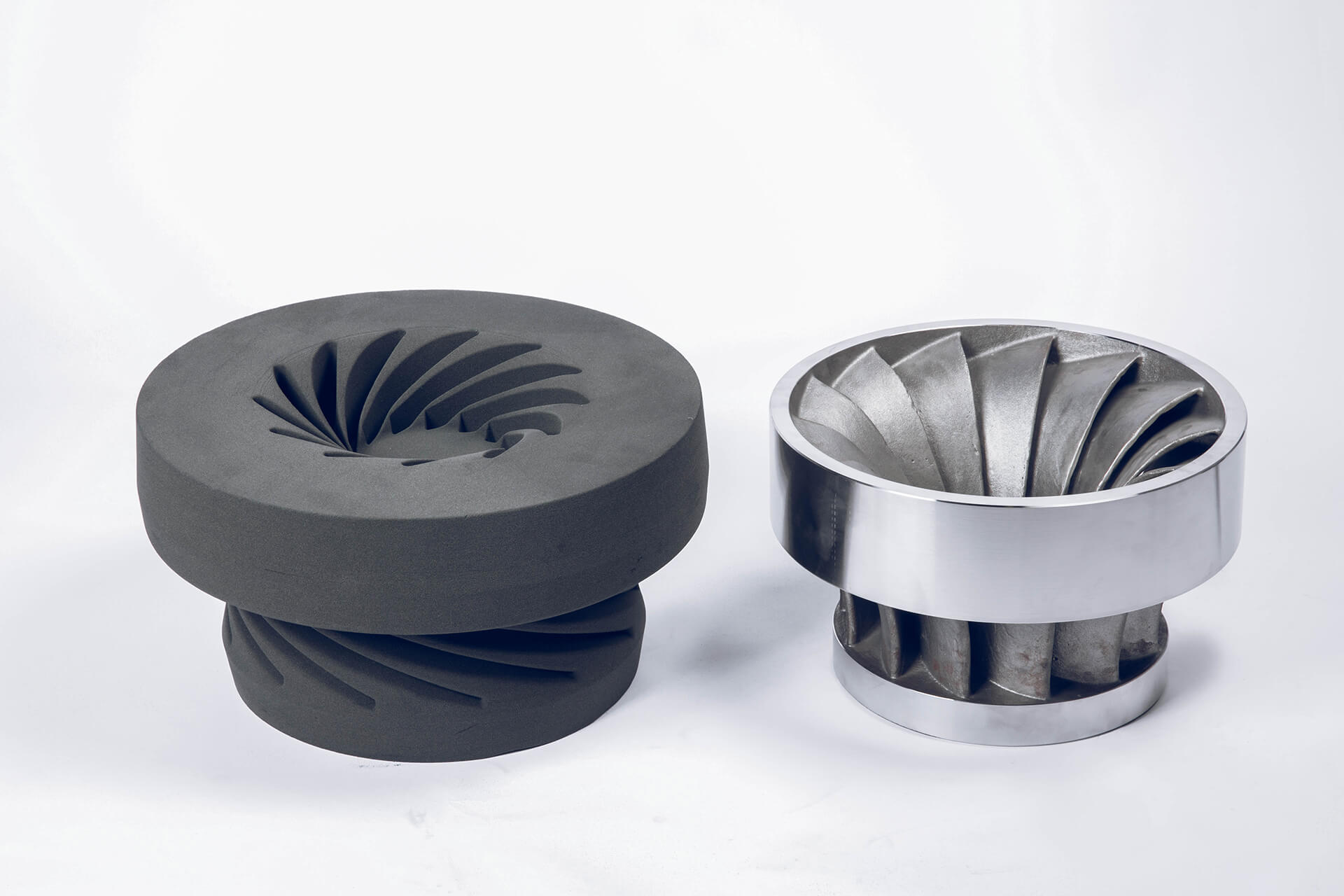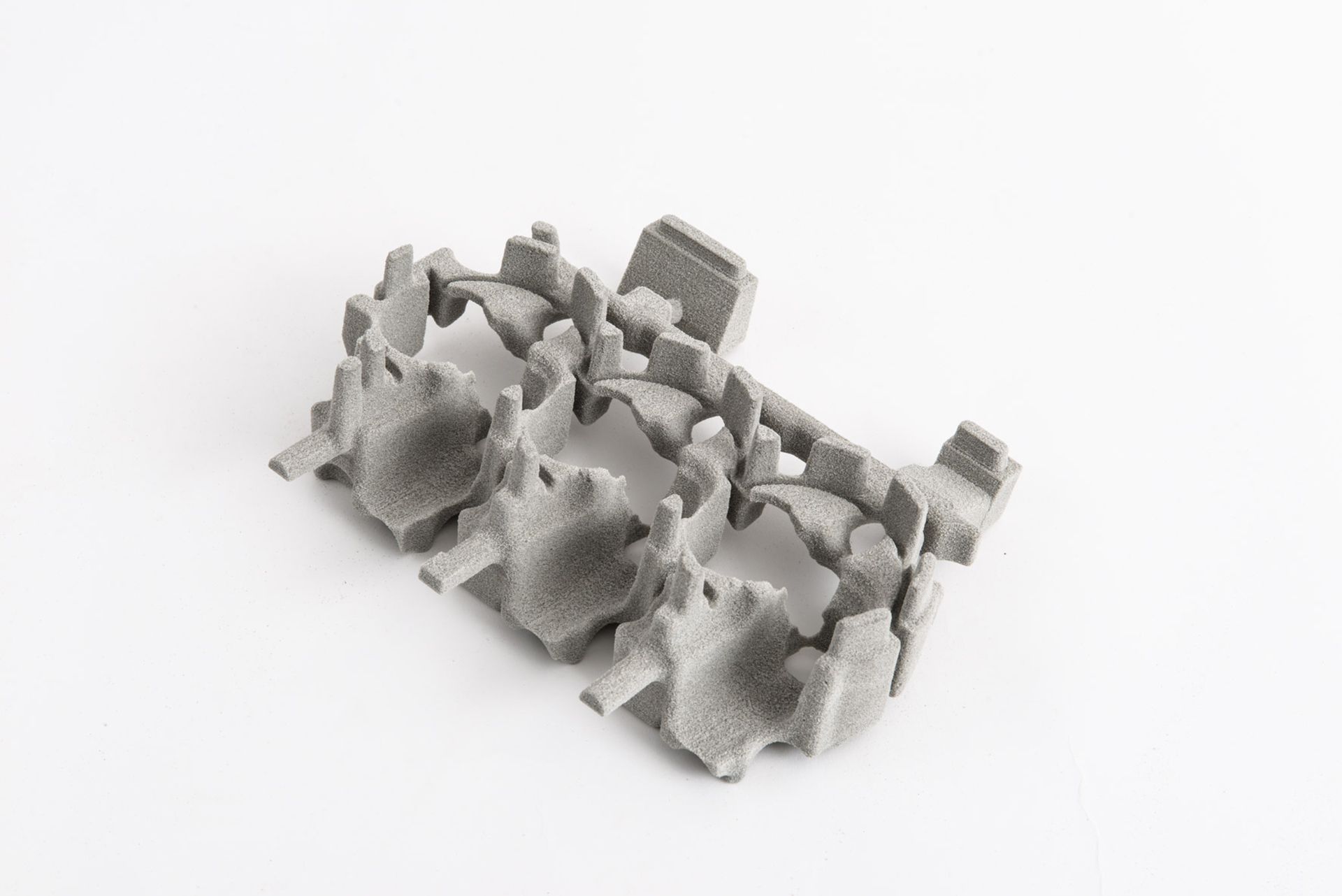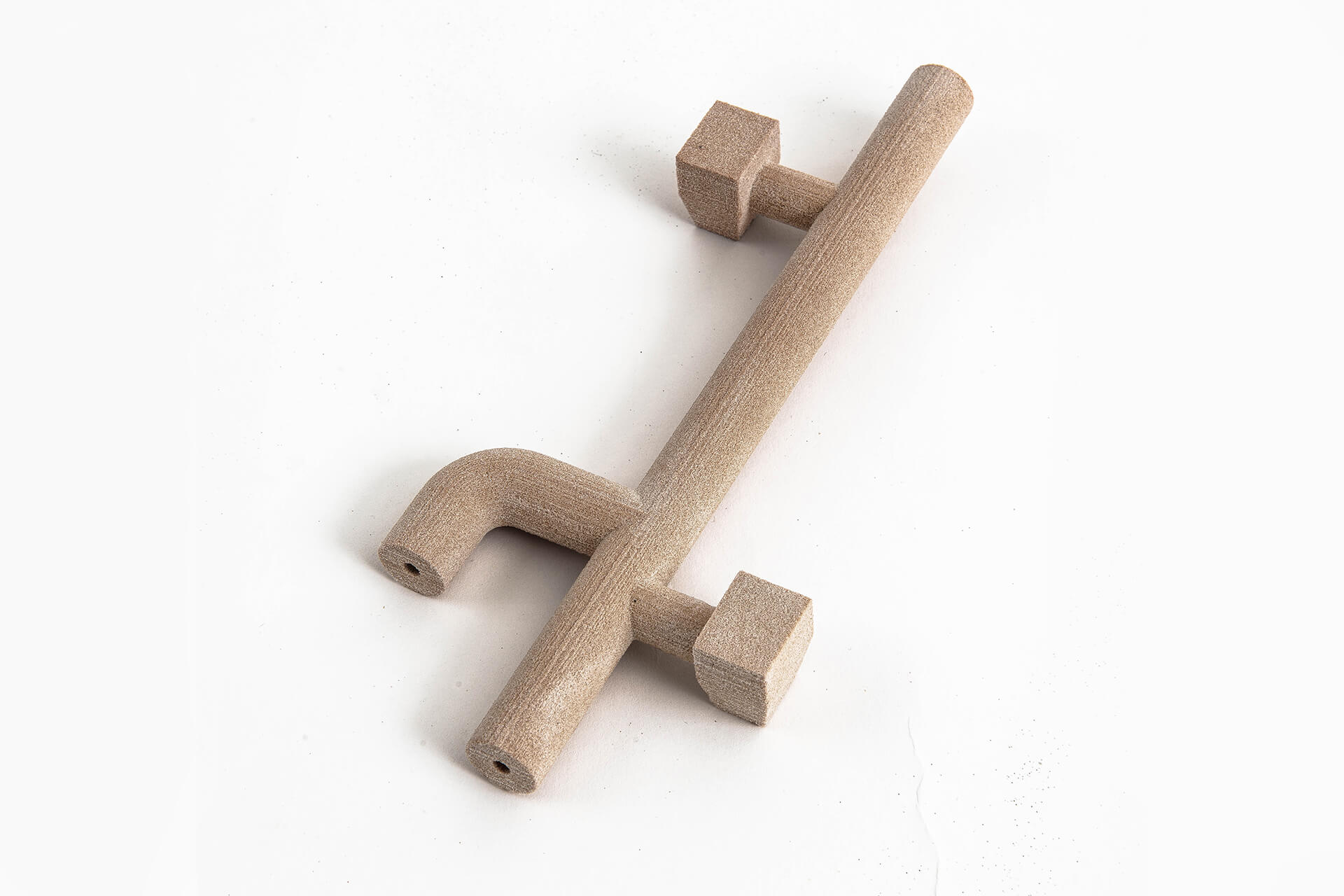3D printing process
Powder Binder Jetting
- Home
- Additive Manufacturing
- 3D Printing Processes
- Binder Jetting Technology
What is binder jetting 3D printing?
Binder jetting additive manufacturing, also known as 3D printing, is a technology in which powdered materials are bonded layer by layer through the selective application of binder fluids.
In simplistic terms, the process works similar to a classic inkjet printer. However, instead of applying ink to a sheet of paper to create a two-dimensional drawing, binder jet 3D printing processes work in a three-dimensional powder-bed approach by selectively and precisely bonding individual layers of powder together to create a three-dimensional product.
How binder jetting works?
Like most additive manufacturing processes, binder jetting is also based on digital CAD data sets. These are “sliced” into extremely thin layers by the print software. Two key components then work together in the printing system: the recoater and the print head. The recoater applies a micrometer-thin layer of powder material to be printed onto a building platform.
The print head then passes over the platform and selectively applies a binder to the areas of the building platform where the component is to be printed according to the sliced data set. The platform is then lowered by exactly one layer thickness and the recoater applies a new layer of powder, which is again selectively bonded by the print head.
These process steps are repeated until the component is completely printed within the powder bed. The component can then be unpacked from the box and cleaned of excess, non-bonded material.
How binder jetting 3D printing can help you technically and economically?
Material diversity
Almost any powder material can be bonded with a complementary binder - whether sand, ceramic or plastic.
Geometric freedom
Due to layered-based printing, even the most complex part geometries can be realized. The powder bed has a stabilizing effect so that no support structures are necessary.
Speed
Thanks to the possibility of using industrial printing modules, binder jetting printers can achieve very high printing speeds.
Precision
Piezoelectric print heads are characterized by outstanding precision and edge sharpness.
Scalability
Processes can be easily scaled to larger output margins by enlarging the print heads.
Compatibility
Due to the high material variety, the material sets of the binder printer can be adapted to existing production environments in order to integrate them into existing value chains.
Processable binder jetting materials
voxeljet is one of the pioneers of the first hour when it comes to establishing 3D production processes in professional or industrial environments. With a wide range of processable materials, our powder printing was specially developed for industrial use and is among the best the market has to offer worldwide, especially when volume, efficiency and speed in production are important. Here is a selection of factory-certified materials for additive manufacturing:
Process
Our processes are furan resin based (FDB or ODB), phenolic resin based (PDB) or water glass based (IOB) and are ideal for the high quality requirements of the foundry industry.
Sand types
In addition to classic quartz sand, we offer cerabeads and chrome ore with different grain sizes.
Post-processing
The finishing is done by epoxy resin infiltration or sealing.
Processes
Our processes PolyPor B and PolyPor C are optimal for the additive manufacturing of plastic components.
Materials
Our plastics processes can be used to print standard polymethyl methacryate (PMMA).
Post-processing
The finishing is done by epoxy resin infiltration, cold or hot wax infiltration.
Processes
Our ceramic processes are phenolic resin-based processes (PDB) and water based (CDB) are optimal for the production of complex and filigree cores or molds.
Materials
With our ceramic processes, silicate (SiC) and oxide (AIO2, TiO2, ZrO2) based ceramics can be printed.
Post-processing
Post-processing can be done by drying or impregnation with subsequent sintering in an oven.
Alloys
With maximum metallurgical and casting know-how. In well-established processes, voxeljet realises projects quickly, economically and in accordance with German quality standards with experienced network partners from the foundry industry. In aluminium, magnesium, steel, iron, titanium and bronze.
What applications is binder jetting 3D printing suitable for?
As almost any powder material can theoretically be printed, the possible applications of binder jetting 3D printers are almost universal. At voxeljet, we specialize in sand and plastic materials for metal casting applications, ceramic material sets and polymer applications.
Industrial 3D Printing Systems
Our portfolio of industrial 3D printer ranges from compact systems for research to additive mass production.
























